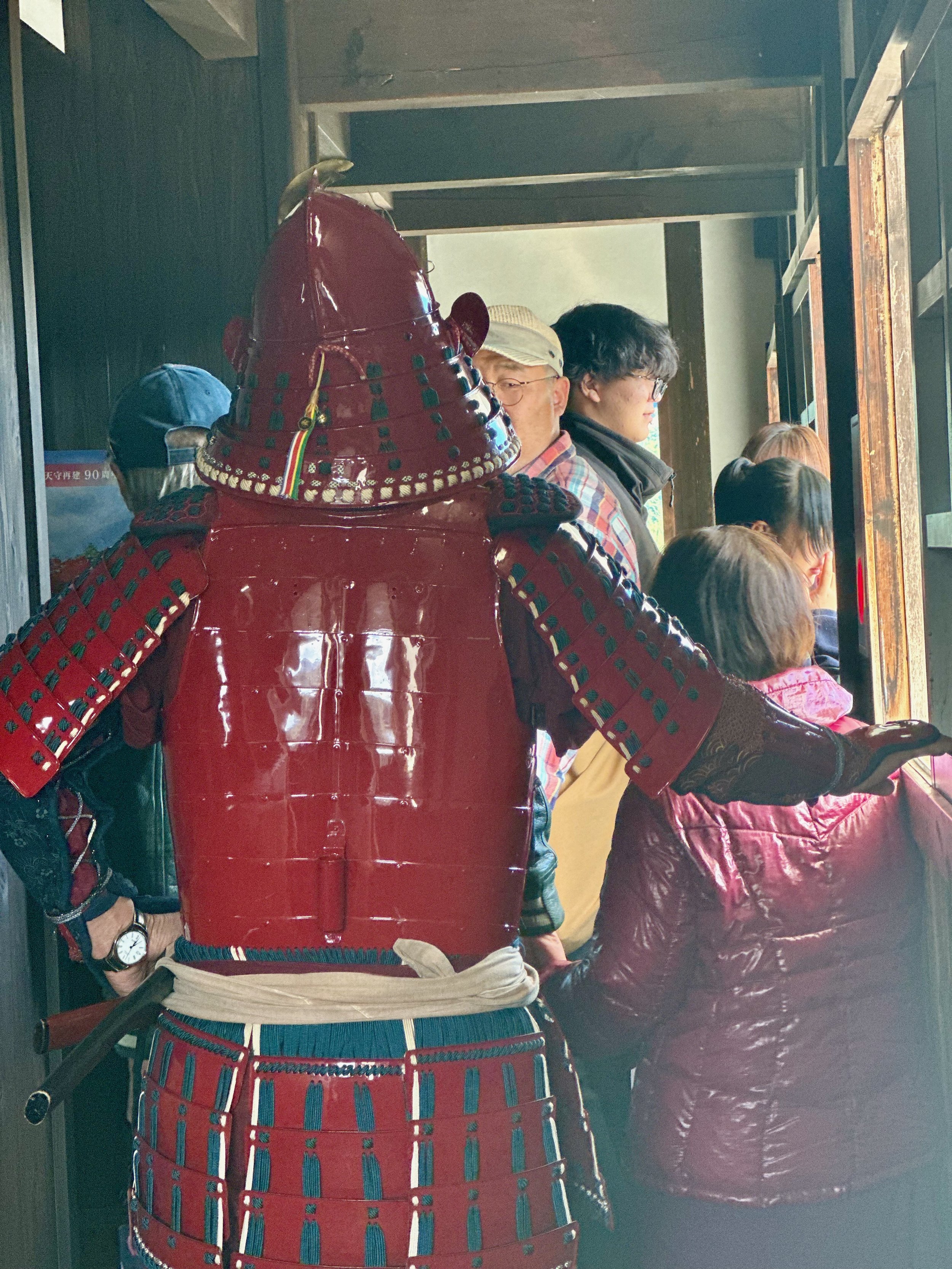Van Life Chronicles: Exploring Gifu in 7 Days「Day 2: Gujo」
We woke up to a stunning view. It was quiet, the morning light pierced through the fog, and the air felt fresh and pure. We walked slowly, enjoying the peaceful nature, waiting for the sun to rise and warm our faces. It was a perfect way to start the day, feeling grateful for this break from our busy life in Tokyo.
We had an hour's drive ahead to reach Gujo, but we made a quick stop at Monet’s Pond along the way.
📍 Monet's Pond (the Namonaki Pond)
at Monet's Pond parking lot
Nestled near Nemichi Shrine, "Monet's Pond," formerly nameless (namonaki means nameless), garnered fame in 2015 after its picturesque beauty likened to a Claude Monet painting became viral on social media. Initially, this small reservoir served as an irrigation source until locals revitalized it in the 1990s, clearing debris and planting water lilies. Over time, Japanese carp were introduced, enhancing the pond's allure.
The pond's stunning clarity owes itself to the water sourced from Mt. Koga, rich in rhyolite, preventing microbial growth and resulting in exceptionally clear spring water. Social media's spotlight in 2015 propelled the pond to sudden fame, attracting thousands of visitors during holidays. However, the surge in popularity led to traffic congestion, highlighting the need for improved facilities to accommodate the influx of visitors.
📍 gujo hachiman castle
gujo hachiman castle
Gujo Hachiman Castle, founded in 1559, was an essential fortress in ancient times. Though it was destroyed during a significant period in history, its stone walls remained for many years. In 1933, a wooden castle tower was rebuilt, representing the city's past and standing as a proud symbol of Gujo's history.
the Castle has a rich history, particularly during the end of the Sengoku period in the late 16th century and the subsequent period of change during the Edo and Meiji eras. At that time, Japan underwent significant social and political transformations, including the fall of the samurai rule and the rise of a modern state under Emperor Meiji in the late 1800s. These changes reshaped the country's feudal system and governance structure, impacting castles like Gujo’s.
The castle sits on a hill and offers excellent views of the town and mountains, especially beautiful during November when the fall foliage colors the surroundings. Today, the castle is a popular spot for visitors.
It's open at different times depending on the season: March to May (9am - 5pm), September to October (9am - 5pm), June to August (8am - 6pm), and November to February (9am - 4.30pm). closed from December 20 to January 10. Admission costs ¥400 for the castle alone or ¥750 with an access to the Hakurankan Museum.
「Address: 659 Ichinotaira, Yanagicho, Gujo 501-4214」
📍 gujo hachiman town
Gujo Hachiman, also known as "Little Kyoto", is best explored on foot! You can easily stroll around the town and immerse yourself in an experience that offers peace and inspiration, unlike the hustle and bustle of a large city.
gujo hachiman town
Kajiya-machi and Shokunin-machi are among the town's well-preserved streets within the central historic district. These streets, along with Yanagi-machi, are part of the national government's designated "Important Preservation District for Groups of Historic Buildings" in Gujo Hachiman, contributing significantly to the town's cultural heritage.
Historically, Kajiya-machi and Shokunin-machi were home to skilled craftsmen like blacksmiths, coopers, and carpenters. The houses along these streets typically have workshops on the ground floor facing the street, while living quarters are situated above. Some artisans still live and practice their crafts in this area.
The water channels lining both sides of the street were constructed in 1660 after a devastating fire in 1652 razed most of the northern part of the town. These channels serve both as a preventive measure against fires and as a source of daily household water. If you observe closely under the eaves of these houses, you'll spot black-banded fire buckets and hansho fire bells, used for fire protection and alerting others in case of fires. (Please refrain from ringing these bells!)
However, our most enjoyable activity (especially for our daughter) was Igawakomichi, an irrigation canal where large Koi and other river fish swim freely. This small canal winds through the town just behind the residential houses. By putting ¥100 in a piggy bank you can help yourself with fish food, our daughter had an absolute blast feeding the enormous carp!!
a happy little girl feeding enormous carp!!
📍 Gujo Onsen Hosen
We wrapped up our day with a visit to Gujo Onsen Hosen, a lovely place that offers access to natural hot springs just for the day in Hotel Gujo Hachiman. There, we found a simple yet perfect indoor bath, a bit hot though, but just absolutely relaxing. But the best part was the open-air bath – it was just amazing!
Picture this: sitting in a warm bath, looking out at the clear waters of the Nagaragawa River and the mountains around us. It was so peaceful, hearing the gentle sounds of nature while relaxing in the water…
「Address: 208 Hachimancho Yoshino, Gujo 501-4206」
Photo credit: Gujo Onsen Hosen
📍 Ogimachijoato Parking Lot
We decided to grab a quick dinner at a cozy family-friendly diner before getting our daughter ready for bed. We knew we had an early start the next day as we were headed to our first stop, Shirakawako, which was about 90 minutes away.
Arriving at Shirakawako quite late around 11pm, we found a peaceful scene at the observatory parking lot. Just two cars were parked, and it was silent all around – everyone was already fast asleep. We joined in, settling down for the night, excited for the morning's adventure awaiting us!











































